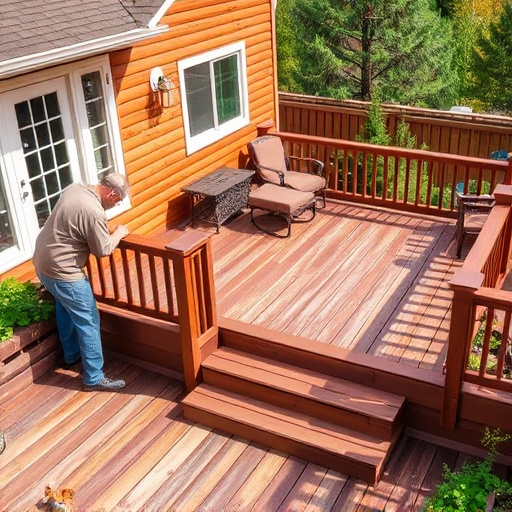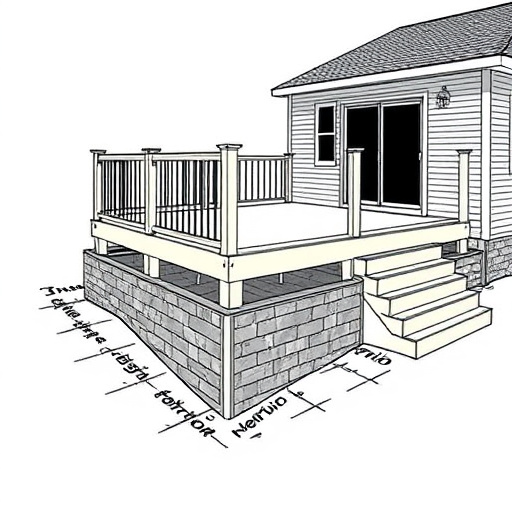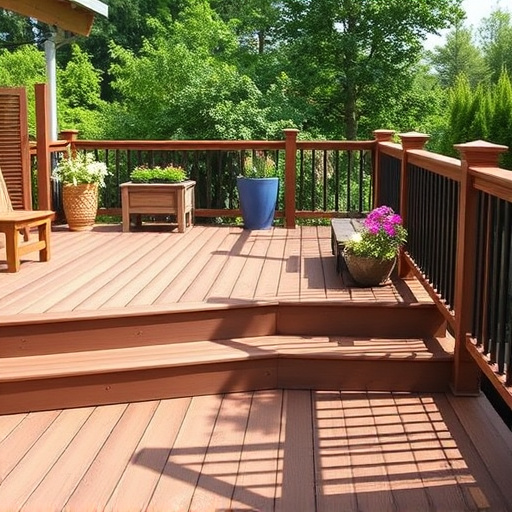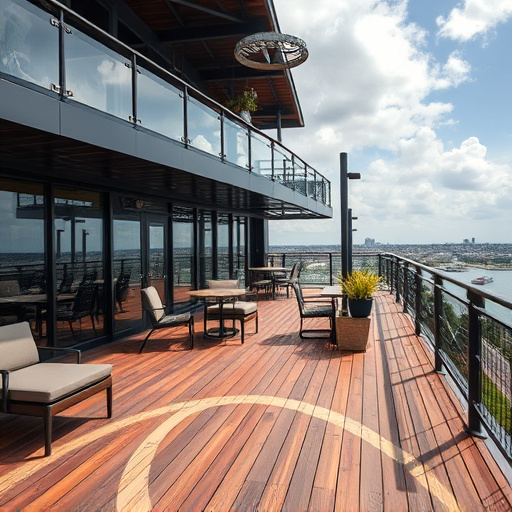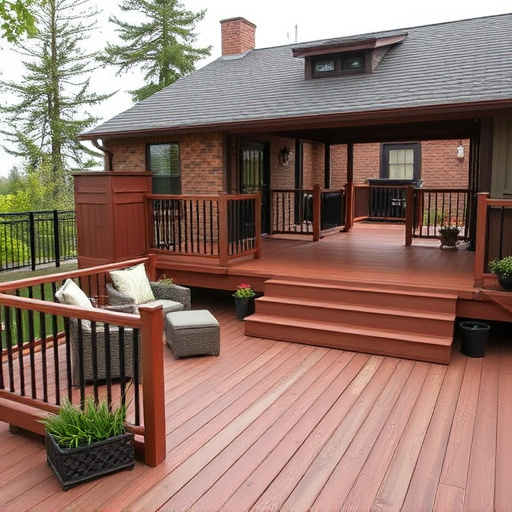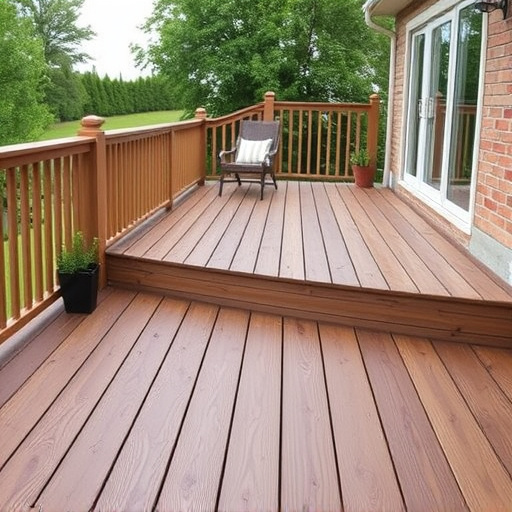Assess space needs, measure for seating areas, and consider functionality before planning deck design. Choose seating based on deck size, material for aesthetics & durability, and prioritize comfort, accessibility, and maintenance for all users. Integrate professional siding services for inclusive, functional outdoor spaces.
Looking to transform your deck into a cozy oasis? Incorporating seating areas is key in enhancing outdoor living spaces. This article guides you through the process of deck planning by focusing on three essential steps: assess deck space and functionality, choose seating styles suited to your area, and plan for comfort and accessibility. Discover how to optimize your deck’s potential and create a welcoming, practical, and stylish outdoor retreat.
- Assess Deck Space and Functionality
- Choose Seating Styles That Suit Your Space
- Plan for Comfort and Accessibility
Assess Deck Space and Functionality
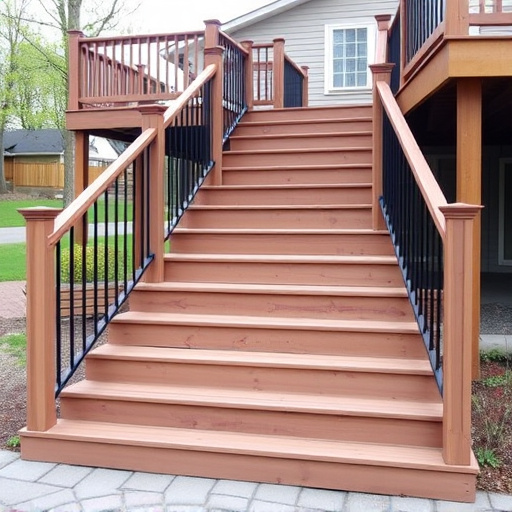
Before tackling deck planning, take a good hard look at your available space and consider how it will be used. Measurements are key – don’t assume you have more room than you actually do. Note the dimensions of your deck and plot out potential seating areas, keeping in mind traffic flow and any existing structures or features. Think about functionality; will this area be a dedicated dining spot, a cozy conversation nook, or a multi-purpose space for games and relaxation?
Understanding how you’ll use your deck will guide decisions on seating arrangement, furniture choice, and even deck styling. For instance, if you envision hosting gatherings with ample seating and dining options, consider adding a built-in bench or sectional with enough room for comfort and conversation. If a peaceful retreat is more your style, plush lounge chairs facing a scenic view could be the perfect solution. Home service solutions like siding services or siding replacement can enhance curb appeal, but it’s crucial to balance aesthetics with practicality in your deck planning.
Choose Seating Styles That Suit Your Space
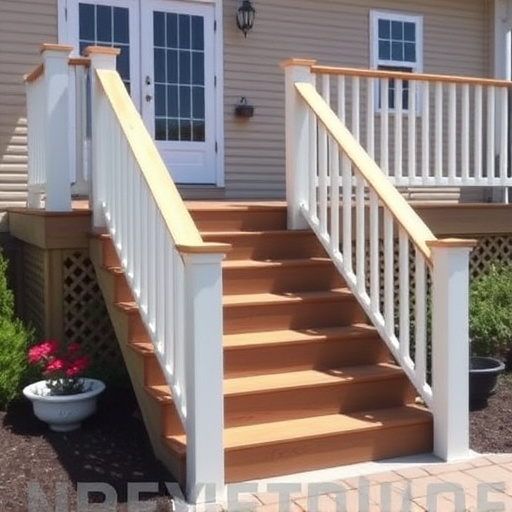
When planning your deck, consider seating styles that complement both its size and design. For smaller decks, opt for compact yet cozy arrangements like built-in benches or lounge chairs to maximize space. Larger decks can accommodate more elaborate setups, such as sectional seating areas with ottomans and chaises, perfect for entertaining guests.
Different materials also offer various aesthetics and levels of comfort. Wood is a classic choice that blends seamlessly into outdoor environments but requires regular maintenance. Wicker or rattan furnitures provide a lightweight, airy feel ideal for regions with milder climates. For low-maintenance options, consider aluminum or composite seating, durable against rust and weather damage, ensuring your deck remains inviting throughout the year—even after potential storm damage repair, as highlighted by expert roof consulting services.
Plan for Comfort and Accessibility
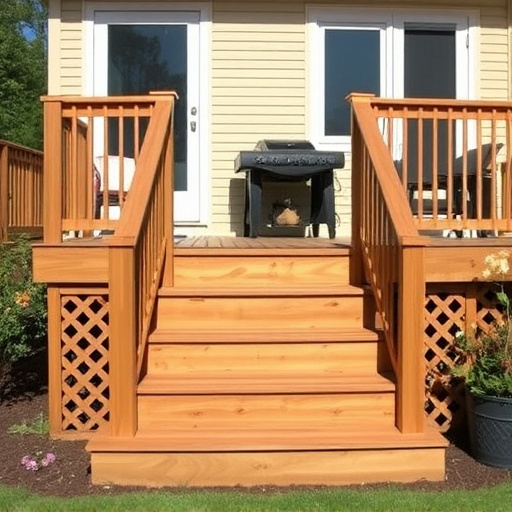
When planning a deck, comfort and accessibility should be top priorities. Consider the average height and size of your intended users; ensure seating areas are at a suitable level for easy access and include enough space for individuals to relax comfortably. This means accounting for mobility aids like wheelchairs and walkers, as well as the natural movements and gestures people make when relaxing outdoors.
In terms of deck planning, choose seating that offers back support and is positioned at a comfortable height from the ground. Incorporate various types of seating, such as benches, chairs, and couches, to cater to different preferences. For commercial roofing or residential siding projects involving decks, it’s also crucial to think about accessibility for maintenance and cleaning, ensuring any design choices seamlessly integrate with professional siding services.
When incorporating seating areas into your deck planning, consider the unique layout of your space, select seating styles that complement it, and prioritize comfort and accessibility to ensure a functional and inviting outdoor living area. By following these steps, you’ll create a soothing sanctuary where you can relax and enjoy the beauty of your surroundings.








